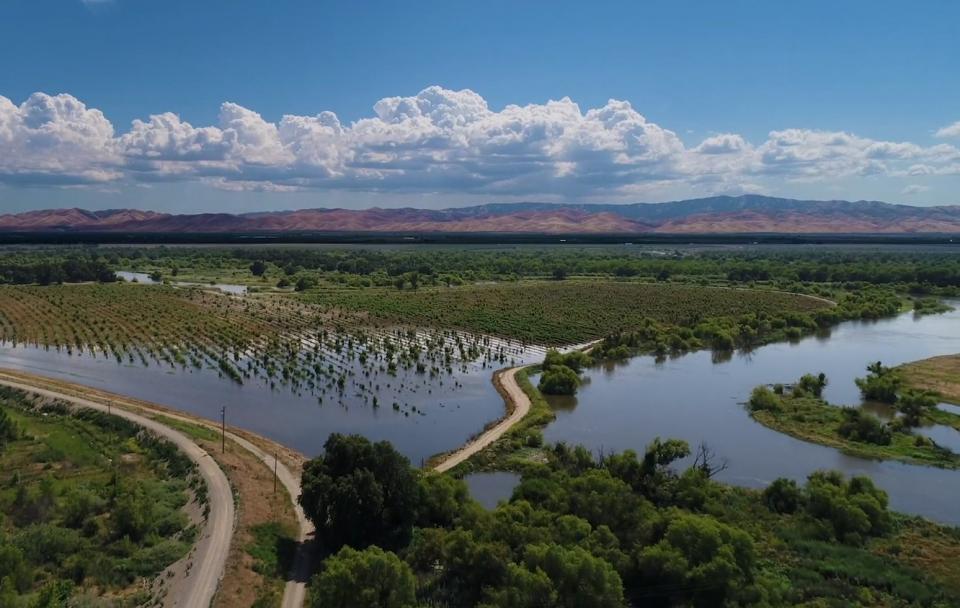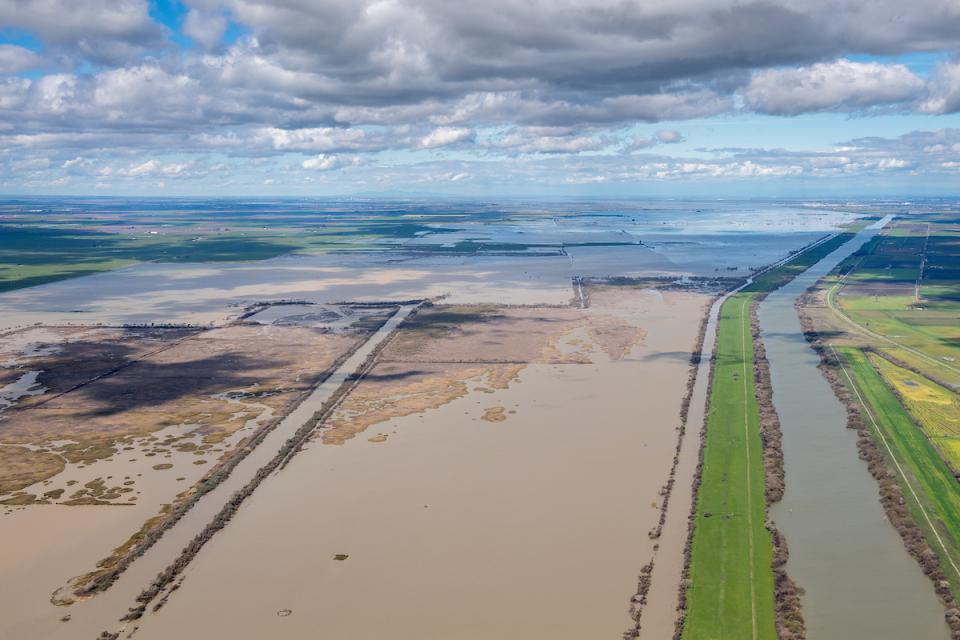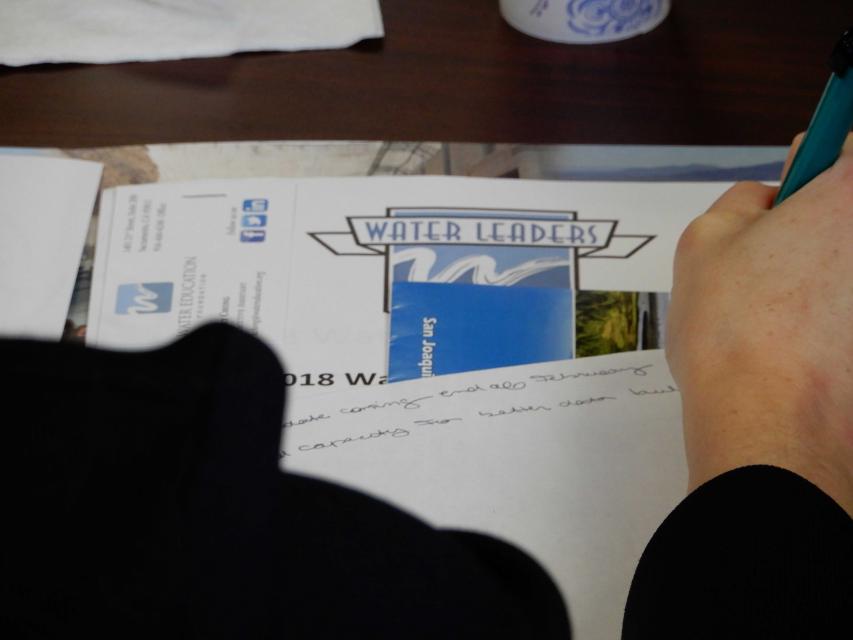WESTERN WATER-California Spent Decades Trying to Keep Central Valley Floods at Bay. Now It Looks to Welcome Them Back
READ OUR WESTERN WATER IN-DEPTH, WATER WORD OF THE DAY AND DON'T-MISS WATER READS FROM ACROSS THE WEST
Dear Western Water readers:
 Land and waterway managers labored
hard over the course of a century to control California’s unruly
rivers by building dams and levees to slow and contain their
water. Now, farmers, environmentalists and agencies are undoing
some of that work as part of an accelerating campaign to restore
the state’s major floodplains.
Land and waterway managers labored
hard over the course of a century to control California’s unruly
rivers by building dams and levees to slow and contain their
water. Now, farmers, environmentalists and agencies are undoing
some of that work as part of an accelerating campaign to restore
the state’s major floodplains.
Amid growing policy momentum and a flood of funding for multi-benefit floodplain restoration, dozens of projects are planned or in the works that together could add tens of thousands of acres to the Central Valley’s existing floodplain acreage. The hope, shared by stakeholders who have traditionally fought over water and land, is to rebuild habitat for fish, birds and other wildlife while simultaneously providing benefits, like improved flood protection and groundwater recharge, for towns and farms.
Western Water explored some of the benefits, hopes and challenges involved in remodeling the landscape. Read the full story here.
Water Around the West
Five don’t-miss articles from around California and the West:
As cities grow, wastewater recycling gets another look: Brittany Peterson and Sam Metz with The Associated Press take a look at how growing but dry regions scrambling for ways to increase water supplies are turning to recycled wastewater, stormwater and even desalinated seawater to slake thirsts.
As Lake Powell shrinks, the Colorado River is coming back to life: Zak Podmore, writing in the Salt Lake Tribune, explores how as the water level in Lake Powell recedes, long-buried rapids have started to reemerge, side canyons are being scoured of mud, beaches are forming again, native plants are reestablishing themselves and habitat for threatened fish species may be expanding.
Winged warning: Migrating birds hit hard by California’s drought: Julie Cart of CalMatters examines how two years of drought in California have eliminated many of the Pacific Flyway’s rest stops for migratory birds in California — particularly in the far north Klamath region — forcing ducks, geese, eagles, herons and other traveling birds to stay aloft and keep looking for water where there is little.
Meet the Nevada climatologist who helps write the U.S. Drought Monitor: Daniel Rothberg with The Nevada Independent talks with one of nine authors of the weekly U.S. Drought Monitor map — and the only one based in the West — to learn how the map frequently cited in news reports is put together.
Beavers Can Help California’s Environment, But State Policy Doesn’t Help Them: Carolina Cuellar, writing in Bay Nature, examines the plight of the beaver, whose dam-building practices can create habitat that benefits other species but can also create flood risks, and the government policies that often lead to their deaths.
Water Word of the Day
 Devastating floods are almost an
annual occurrence in the West and in California. With the
anticipated sea level rise and other impacts of a changing
climate, particularly heavy winter rains, flood
management is increasingly critical in California.
Compounding the issue are human-made flood hazards such as levee
instability and stormwater runoff. You can read more about flood
management and other water-related issues in Aquapedia, our free online water
encyclopedia.
Devastating floods are almost an
annual occurrence in the West and in California. With the
anticipated sea level rise and other impacts of a changing
climate, particularly heavy winter rains, flood
management is increasingly critical in California.
Compounding the issue are human-made flood hazards such as levee
instability and stormwater runoff. You can read more about flood
management and other water-related issues in Aquapedia, our free online water
encyclopedia.
At the Foundation
 Applications are now available for
our yearlong Water
Leaders class. The program is aimed at
providing a deeper understanding of California water issues and
building leadership skills with class members by studying a
water-related topic in-depth and working with a mentor. The
deadline to apply for the 2022 class is Dec. 7 at 5
p.m. Find the online application form and other required
items for your application package here.
Applications are now available for
our yearlong Water
Leaders class. The program is aimed at
providing a deeper understanding of California water issues and
building leadership skills with class members by studying a
water-related topic in-depth and working with a mentor. The
deadline to apply for the 2022 class is Dec. 7 at 5
p.m. Find the online application form and other required
items for your application package here.
Water Academy
 Our 24-page Layperson’s
Guide to Flood Management explains the physical
flood control system, including levees; discusses previous flood
events (including the 1997 flooding); explores issues of
floodplain management and development; provides an overview of
flood forecasting; and outlines ongoing flood control projects.
This guide includes information on California’s FloodSAFE
effort, levee repairs and how climate change could affect
precipitation and runoff patterns. You can order yours
here.
Our 24-page Layperson’s
Guide to Flood Management explains the physical
flood control system, including levees; discusses previous flood
events (including the 1997 flooding); explores issues of
floodplain management and development; provides an overview of
flood forecasting; and outlines ongoing flood control projects.
This guide includes information on California’s FloodSAFE
effort, levee repairs and how climate change could affect
precipitation and runoff patterns. You can order yours
here.








